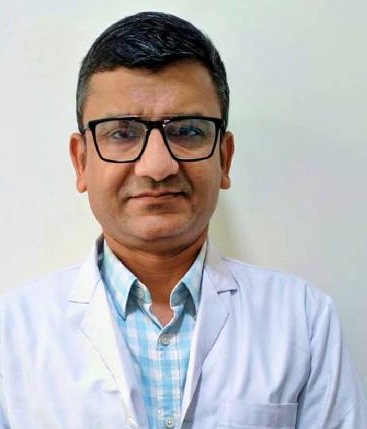Top 10 Hair Transplant Side Effects for Long Term in Future

Quick Summary
- Hair transplant is a medical procedure that is the most effective and promising method for hair restoration.
- There is always a risk of specific side effects and complications with any surgical technique.
- The severity and spread of the side effects vary among person-to-person.
Hair transplantation procedure is a medical procedure which is the most effective and promising method for hair restoration. Constantly being modified, the techniques hold cosmic expectations.
However, as with any surgical technique, there is always a risk of specific side effects and complications. The severity and spread of the side effects vary among person-to-person. Thus, before undergoing a hair transplant, it would be preferable for you to get a thorough understanding of the potential hair transplant side effects. So, keep reading.
What is Hair Transplant?
The usual method for hair transplant is to remove hair from the back of the head. But in some cases, it is also taken from the body. Hair is taken only from the person for whom the transplant is performed. This procedure is done only by a Plastic or dermatological surgeon specialising in hair transplant surgery. Before we study the hair transplant side effects, let us see the different types of hair transplant techniques.
Hair Transplant Techniques
There are broadly two types of hair transplantation methods. These include:
- Follicular Unit Transplant Method: This method is also called Follicular Unit Strip Surgery (FUSS) and is usually performed on those in the advanced stage of baldness, loose scalp and reverse hair loss.
- Follicular Unit Extraction Method: This method has been preferred recently as it is minimally invasive. There are no stitches, and the area regains the original look within a few days. This method is performed in patients with thin hair or baldness at the top or front of their heads.


Short-Term and Long-Term Side Effects of Hair Transplant
Short-Term Side Effects
- Bleeding-Nicks and cuts are common with any surgery. Even if it is minimally invasive, incisions will have to be made in this procedure too. It can result in blood loss, which is one of the common hair transplant side effects. Doctors ensure that there is minimum bleeding. Whatever blood oozing is there can be stopped by pressing gauze on the area. Patients need to inform the doctor if they are consuming any blood-thinning medicines.
- Infection - Infection is a possibility in any surgical procedure. But surgeons take adequate measures against it by disinfecting the area where the procedure has to be performed. However, there is always a possibility that infection can occur. So, for those asking, "does hair transplant have side effects" we will say that infection is one of the side effects. But a simple antibiotic prescribed by your doctor can take care of it. If left untreated, the infection can spoil the look of the restored hair. This will need additional surgeries to correct the problem. Untreated infection in the donor site can result in ugly-looking scars and poor hair regrowth. This means that the patient will lose hair which should not happen.
- Thinning Of Hair- Thinning of the hair is one of the common side effects of hair transplant. One may be surprised that this is happening after surgery for hair growth. Thinning, along with falling hair, can occur immediately after the hair transplant. But this is usually a temporary phenomenon.
- Itching- Itching is one of the usual hair transplant side effects that affects close to thirty per cent of patients. In most cases, this happens due to scabs on the scalp. One can treat this easily with special shampoos. Irrespective of whether the problem is severe or not, it is better to get it checked by a doctor. If the itching is not treated promptly, the patient will be forced to scratch the scalp. If you scratch your scalp the newly grafted hair may fall off.
- Pain- When someone asks what the side effects of a hair transplant are, one can certainly mention pain. It occurs with almost all patients. But usually, the pain is endurable. If it turns severe, one can get relief by taking pain medication.
Long-Term Side Effects
- Swelling-It is a very common side effect and is observed in majority of the patients who have undergone a hair transplant. The sites of the swelling may vary from person to person as some patients might have swelling on the forehead or around the eyes. The swelling will subside in a few days. If it does not subside, it would be good to consult a doctor.
- Scarring- It is one of the hair transplant side effects that many patients experience. Some people are more prone to suffer this side effect than others. This is usually true with those opting for the FUT method. The scars can be easily treated with medicines. Even those that don't disappear can be covered with hair.
- Cysts formation- Cysts are clusters of pimple-sized growths that in rare cases may turn into a cancerous growth. This generally happens when the buried grafts are not removed properly. Generally, it disappears in a few weeks, however, consult your doctor if it does not resolve.
- Numbness- It is one of the commonly occurring long-term side effects of hair transplant that can last up to eighteen weeks. Those who suffer from this for a longer period should get medical care.
- Permanent Loss Of Hair- Patients can permanently lose hair in the donor area. This is because once the grafts are removed, there might be a chance of no hair growth in that spot. The area might remain without any hair in some cases. This is why it is essential for those undergoing hair transplants to have sufficient hair growth in the donor area to cover the places from which grafts are removed.
Adverse Effects During Surgery
- Complications Due To Anaesthesia- Adverse reactions to local anaesthesia is rare. Most of it comes from a fear of the procedure. However, doctors should do a sensitivity test before administering the anaesthesia.
- Intraoperative Complications- An increase in the rate of heartbeat also, also known as Tachycardia, is possible because tumescent fluid adrenaline is administered. This is a temporary reaction, but for tthis may be a risk for those with existing cardiac problemselectrocardiogram and assessment for anaesthesia fitness must be done for all patients before the surgery. It is also recommended that heart rate and blood pressure are monitored throughout the surgery, especially when giving anaesthesia.
- Syncope- Syncope or fainting occurs in some patients post-surgery. This may occur due to pain, low blood pressure, adverse reaction to the anaesthesia, less intake of fluids or low blood sugar. Taking correct analgesic precautions is a way to prevent it from happening. Doctors should also try to minimise the use of anaesthesia by doing the surgery quickly. Maintaining hydration and electrolyte balance during the procedure will also avoid such situations. Giving hypotensive drugs before surgery is also helpful in preventing syncope.
Treatment Specific Adverse Side Effects
Side Effects Specific To FUT:
- Scarring: Scarring occurs after the FUT method of hair transplant is done. This is because in this method stitching of the scalp is required after removing strips of the scalp from the donor area. Scarring is a permanent side effect.
- Nerve Damage: This is another side effect of the FUT method. The extent of damage depends on the depth of the wound and the area it covers. The damage to the nerves can last up to six months. In some cases, it can be permanent. The solution to the problem is to use the FUE method as far as possible.
- Reduced Scalp Flexibility: Stitches need to be made to close the area from which strips of the scalp are removed for grafting. The stitches can result in reducing the flexibility of the scalp for around eight months. In some patients, the condition can be permanent.
Side Effects After FUE Hair Transplant
- Pinpoint Scarring: Though scarring is not as visible as in the FUT method, scarring does take place in this method also. These scars are as small as a pinpoint. A skilled surgeon can make them almost invisible to the naked eye. These are more visible in those with a darker skin type like those found in India.
- Buried Graft: This is a condition where the grafts are pushed into the dermis. This happens when a blunt punch is used, or the punch and follicles are not properly aligned.
- Donor Site Depletion: This happens when aggressive and non-uniform graft removal is done at the donor site. This can result irrespective of the type of punch used. The donor site will appear patchy when this type of harvesting is done.
Summing Up
HexaHealth helps you find the best doctors for hair transplants in your area. We assist you with insurance claims and the relevant paperwork without any charge. Our organisation also offers a no-cost EMI facility for surgeries.
Frequently Asked Questions
Are there any long-term side effects of hair transplant?
What happens years after a hair transplant?
What are the dangers of a hair transplant?
Is a hair transplant good for health?
What is the lifespan of transplanted hair?
Can hair transplant damaged nerves?
What happens seven months after a hair transplant?
Can you go bald after a hair transplant?
Does transplanted hair grow slower?
Does transplanted hair thicken over time?
How long after a hair transplant are grafts secure?
How many grafts survive after transplant?
Do hair transplants turn grey?
Can I use oil after a hair transplant?
Last Updated on: 12 December 2023
Reviewer

Dr. Priyanka Sharma
MBBS, DNB Plastic Surgery, Training in Hand and Microvascular Surgery, Training in Hair Transplant
15 Years Experience
Dr Priyanka Sharma is a highly regarded Plastic, Reconstructive, and Aesthetic Surgeon with over 15 years of experience.
She is currently associated as a Consultant with:<...View More
Author
HexaHealth Care Team
HexaHealth Care Team brings you medical content covering many important conditions, procedures falling under different medical specialities. The content published is thoroughly reviewed by our panel of qualified doctors for its accuracy and relevance.
Expert Doctors (10)
NABH Accredited Hospitals (5)
Latest Health Articles
Related Treatments



























 Open In App
Open In App